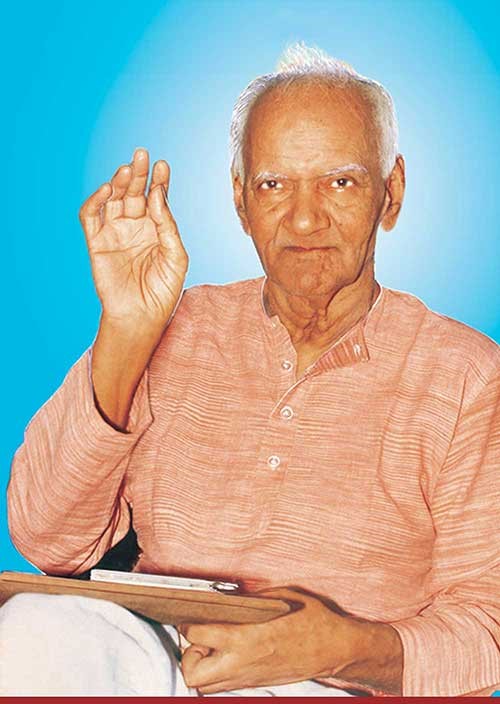Sūkṣmīkaraṇa Sādhana – 17
1. Distinguishing Superstition from Spiritual Reality
- Many people believe in possession by spirits or deities, but this is often psychological rather than spiritual.
- Mental disorders like hysteria and psychosis are often misinterpreted as supernatural possession.
- Ignorance of subtle realms (sūkṣma loka) leads people to either blindly accept or outright reject their existence.
Key Understanding:
- Not all experiences labeled as supernatural are real.
- Some experiences are psychological, while others may be genuine spiritual interactions.
- A clear distinction is needed between ignorance-driven superstition and higher spiritual realities.
2. The Soul’s Journey After Death: Vedic Insights
- The Upanishads and Bhagavad Gītā describe post-death experiences.
- The soul (jīvātma) follows different paths based on karma:
- Śukla gati (Path of Light) – leads to higher spiritual realms (deva-yāna).
- Kṛṣṇa gati (Path of Darkness) – leads to rebirth (dhūma-yāna).
Insights from the Gītā:
Those who perform righteous deeds and sacrifice (yajña) reach higher worlds but return after exhausting their merits.
(Bhagavad Gītā – Chapter 9, Verse 20-21)
- Sanskrit Verse: traividhyā māṁ somapāḥ pūtapāpā
yajñair iṣṭvā svargatiṁ prārthayante
te taṁ bhuktvā svargalokaṁ viśālaṁ
kṣīṇe puṇye martyalokaṁ viśanti - The idea of heaven and hell is temporary – souls reincarnate based on karma.
3. The Unseen Realms and Subtle Beings
- The subtle world (sūkṣma loka) is real but beyond normal perception.
- The ancient ṛṣis (sages) could perceive and interact with these realms.
- Some souls remain in the subtle world, unable to move forward due to unfinished karma.
Two Types of Subtle Beings:
- Liberated Souls (Devatās, Siddhas, Ṛṣis) – Assist humanity spiritually.
- Trapped Souls (Preta, Piśāca, Bhūtas) – Remain due to unresolved karma.
- Spiritually evolved beings establish contact with divine entities to guide humanity.
- Unrefined or ignorant beings cause disturbances and are often perceived as ghosts or malevolent spirits.
4. Scientific Perspectives on the Subtle Realm
- Modern research on paranormal experiences (parapsychology) suggests:
- Ecto-plasmic energy fields might be manifestations of subtle entities.
- The fourth dimension (beyond space and time) is linked to subtle consciousness.
- Thought waves (manas-taraṅgaḥ) operate at speeds beyond light, connecting with subtle dimensions.
- Key Findings from Scientists:
- Martin Gordesser (Physicist):
- “Invisible energy fields influence human experiences in ways science is yet to understand.”
- Adrian Dobbs (Mathematician-Physicist):
- “The universe is filled with unseen forces interacting with human consciousness.”
- Martin Gordesser (Physicist):
How This Relates to Spirituality:
- Ṛṣis and yogis use meditation and tapas to access these dimensions.
- Higher beings (devas, ṛṣis, pitṛs) communicate through mental and intuitive channels.
- Faithful individuals experience divine guidance through intuitive flashes or sudden insights.
5. The Role of Faith and Consciousness
- Faith plays a crucial role in shaping human perception.
- Strong belief can create illusions, but spiritual insight reveals deeper truths.
- Modern materialistic thought dismisses the unseen world, yet mystical experiences remain a universal phenomenon.
The Balance Between Faith and Rationality:
- Blind superstition must be avoided.
- Spiritual seekers should rely on higher wisdom and direct experience.
- Scientific inquiry into consciousness and energy fields aligns with ancient spiritual insights.
Conclusion: Beyond the Illusion of Ghosts
- Not all supernatural experiences are real – some are mind-created illusions.
- The subtle world exists but is governed by spiritual laws.
- Liberated souls assist seekers, while trapped souls wander.
- Science is slowly validating ancient spiritual concepts.
- A balanced approach, integrating rational thought with spiritual wisdom, leads to true understanding.
Thus, the key lies in transcending fear, seeking higher wisdom, and understanding the deeper dimensions of existence.
Sūkṣmīkaraṇa Sādhana – 17 Read More »

